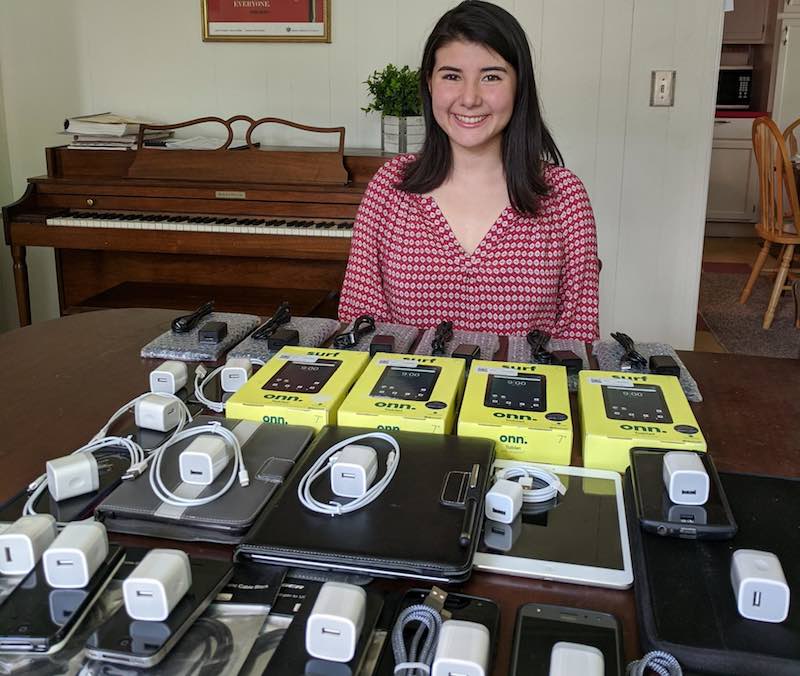This is one of 50 finalists in the Reader’s Digest “50 Nicest Places in America” contest for 2020. A crowd-sourced effort to uncover places in all 50 states where kindness and generosity are reigning supreme amidst a climate of coronavirus and cultural upheaval, you can now vote for your favorite ‘Nicest Place’ by visiting the Reader’s Digest website.
A cancelled internship turned into a big opportunity for one young woman to help her whole state.
Just a few months ago, the Emory University student, like the rest of us, was gearing up for the summer when COVID-19 ruined her plans.
“After receiving countless emails about canceled internships, I had just about concluded that I would be spending my summer twiddling my thumbs,” said Lia Rubel from her home in Barre, Vermont, a blue-collar town of about 10,000.
That’s when she got a call from a friend about a new initiative organized by some Yale University students who saw a great need—a need that escalated to urgent in the era of coronavirus. People were still in need of medical care but couldn’t leave their homes for fear of spreading or contracting the virus, especially seniors, who are more vulnerable.
That’s why, in March, Telehealth Access for Seniors was born: to get communications technology, such as a smartphone or tablet computer, to elderly patients who lack and very much need it.
“It’s more than just a device. It’s a vital connectivity tool and it could save someone’s life,” says Rubel, 18, who joined the initiative in March as the lead for Vermont. “It just hurt my heart that they don’t have that privilege and they can’t connect to friends and families. They can’t even connect to their doctors.”
RELATED: City in Alaska is Housing its Homeless – Which Makes It Possibly The ‘Nicest Place’ in America
Born in the 1960s as part of NASA’s mission to put men on the moon (they might need medical care up there too), telehealth options have experienced a renaissance in the era of high-speed connectivity and ubiquitous devices with screens. In 2002, a former NASA surgeon and engineer founded Teledoc, which became the first nationwide telehealth company in 2005; in 2015, the first medical facility totally dedicated to telehealth opened in Chesterfield, Missouri, Mercy Virtual.
But many people don’t have access to these services for lack of technology, and the problem is worse in Vermont, where about 19 percent of the population is over 65 (versus 15 percent for the rest of the US) and where 10 percent of residents don’t have access to broadband but they do have access to cellular service.

Since March, Telehealth Access for Seniors has expanded to over 50 volunteers in 26 states and they’ve raised an estimated $38,000 and donated 825 devices, Rubel says. In Vermont alone, Rubel has helped collect about 50 devices and $800.
RELATED: Google Maps Now Features COVID-19 Travel Alerts With Social Distancing Mandates And Crowd Levels
“If they’re still self-quarantining, it’s really important for mental health,” says Rubel. “We include with the devices some suggestions to download wellness apps. And they [patients] use the devices to FaceTime family to stay connected.”
Just providing a way for an elderly person to have a “face-to-face” conversation with a loved one in an era of social distancing can be lifesaving. Feeling lonely leads to a 26 percent increase in mortality rate, according to a recent meta-study of 3.4 million people.
Telehealth Access for Seniors offers a free remote phone and email tech support team so that help is always available. The organization also provides instructions on how to set up devices.
“The pandemic has opened our eyes to how important it is to have digital tools and the importance of equipping our seniors with these devices,” says Rubel.
SHARE the Program On Social Media So Others Can Benefit…





















Wonderful!